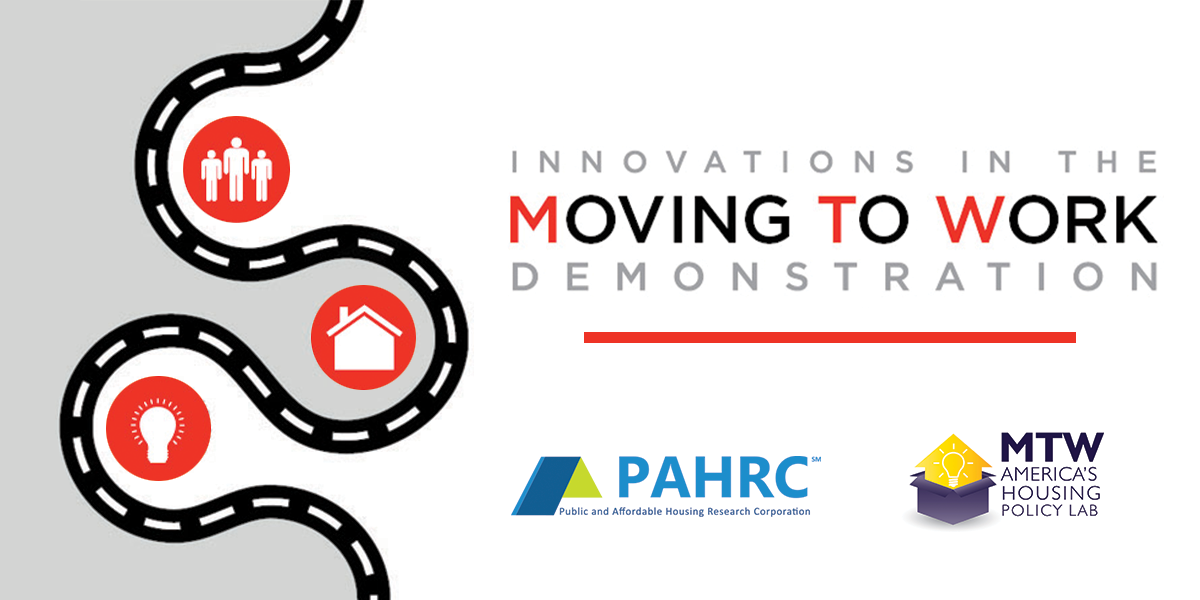The Moving to Work (MTW) Demonstration empowers a select group of public housing authorities (PHAs) to implement hundreds of innovative locally designed policies, programs, and practices to reduce costs, promote economic self-sufficiency, and increase housing choice. To create and test these programs, PHAs granted MTW authority can use their federal funds more flexibly and request HUD grant exemptions or adaptations to some public housing and voucher rules. The MTW program has identified multiple policy changes to reduce costs implemented nationwide, including streamlining inspections and lifting the cap on the percentage of project-based vouchers that a housing authority can place. While only 139 agencies currently have MTW authority, all housing authorities have been challenged to identify ways to reduce costs and improve resident self-sufficiency. Additionally, many industry associations have called for expanding the MTW program to streamline their policies and more effectively serve their communities.
The Public and Affordable Housing Research Corporation (PAHRC), HAI Group’s research division, has partnered with MTW agencies, Abt Associates, and industry associations to identify promising MTW practices and evaluate the performance of MTW agencies. When research sponsored by PAHRC was used to support the expansion of MTW authority to 100 additional agencies, PAHRC partnered with the University of North Carolina Center for Urban and Regional Studies to develop a guide to help PHAs apply for MTW and determine if the demonstration program is right for them. The following blog provides the history of the MTW program, the policies and programs MTW has helped PHAs design and test, and the overall impact the program has had on PHAs and the residents they serve.
History of the Moving to Work program
The Moving to Work program was created in 1996, allowing 30 PHAs to apply for broad funding and regulatory flexibilities. Subsequent appropriations allowed additional PHAs to participate in the program. By 2013, 39 PHAs were actively participating in the MTW Demonstration.
In 2016, Congress authorized HUD to invite 100 additional high-performing PHAs to apply for the program. These 100 agencies were split into four cohorts to evaluate the effect of MTW flexibilities on small PHAs, stepped and tiered rents, landlord incentives, and policies and practices promoting asset building. Compared to the original 39 PHAs, these new MTW cohorts will have more limited flexibilities and will be establishing policies that will help HUD evaluate whether:
- MTW flexibilities increase cost-effectiveness and the number of households PHAs can serve.
- Stepped and tiered rent models improve employment engagement.
- Landlord payments, vacancy payments, and alternative inspection schedules increase landlord engagement in the Housing Choice Voucher program.
- Opt-Out Savings Accounts and rent reporting improve credit and savings among residents.
America’s Housing Policy Lab: How flexibility from the MTW Demonstration has empowered PHAs
As of 2014, PHAs participating in the MTW Demonstration have implemented over 300 innovative policies, programs, and practices to increase cost-effectiveness, the quality and quantity of affordable housing, self-sufficiency, residential stability for targeted households, and the geographic scope of affordable homes.
Most common MTW innovations as of 2014 (Among 34 of 39 Original MTW PHAs)

Source: Innovations in the MTW Demonstration. (2014). Abt Global.
The MTW Demonstration has enabled innovations such as:
- San Diego Housing Commission’s Path to Success and Achievement Academy pairs rent reform with services to promote self-sufficiency among residents. SDHC estimates that since launching the program in 2013, the average annual income for working-age non-disabled households increased by 66%.
- Cambridge Housing Authority’s Expiring Use Preservation Program converts enhanced vouchers to Project-Based Vouchers to preserve 2,184 homes with expiring affordability restrictions.
- Lawrence Douglas Housing Authority’s General Housing program combined public housing and Housing Choice Vouchers into one program to make the administration of affordable housing more efficient and allowed the agency to serve more families with the same number of administrative staff.
- Funding flexibility has allowed numerous PHAs to reallocate funding and reinvest their cost savings to redevelop public housing, build new affordable housing, and expand resident service programs.
Overall impact of the MTW Demonstration
The first comprehensive evaluation of the Moving to Work (MTW) program found that MTW agencies do better than comparison agencies on most performance measures, particularly those related to the MTW program goals of self-sufficiency and housing choice, while also meeting the standard PHA requirements for serving extremely low-income households. MTW agencies can serve a significant number of individuals and families who are not likely to be reached by traditional housing assistance, offer additional support that may enhance a family’s ability to achieve self-sufficiency, and extend the life of their housing stock through increased investments in preservation. The Urban Institute affirmed these findings in subsequent research, concluding that participation in the MTW program positively affects some outcomes related to housing choice and self-sufficiency, such as the number of households served, the share of households with income gains, and the share of positive exits.
While MTW agencies tend to have higher administrative costs than their peers, subsequent research has found that these differences were observed before the agencies joined the MTW program and are not a result of the program's regulatory or financial flexibility. MTW agencies have used these funds to serve additional households and save more to finance the construction and preservation of affordable housing without reducing housing quality, affordability, or the types of households they serve.
Evidence of success in the Moving to Work Program
Source: Testing Performance Measures for the Moving to Work Program. (2017). Abt Global.
The MTW program has also succeeded in its goal of providing a vehicle for local PHAs to innovate and design new approaches to serve the residents and community, such as:
- Providing case management and service-enriched vouchers to promote self-sufficiency.
- Rehabilitating and project-basing buildings to provide additional housing.
- Simplifying rent structures and streamlining administrative procedures to save money.
- Using regulatory and funding flexibility to foster partnerships.
- Targeting housing assistance to special populations not reached by traditional programs.
- Using funding flexibility to address local needs more efficiently.
Want to learn more?
Access the following resources sponsored by PAHRC to learn more about the promising practices implemented by PHAs, the program's impact, and lessons learned in developing strategies for successful MTW programs.
Innovations in the Moving to Work Demonstration
Research Brief | Full Report
Testing Performance Measures for the Moving to Work Program
Research Brief | Full Report | Infographic
The MTW Guide: Formulating Strategies for Successful Participation
Full Report
This article is for general information only. HAI Group® makes no representation or warranty about the accuracy or applicability of this information for any particular use or circumstance. Your use of this information is at your own discretion and risk. HAI Group® and any author or contributor identified herein assume no responsibility for your use of this information. You should consult with your attorney or subject matter advisor before adopting any risk management strategy or policy.
HAI Group® is a marketing name used to refer to insurers, a producer, and related service providers affiliated through a common mission, management, and governance. Property-casualty insurance and related services are written or provided by Housing Authority Property Insurance, A Mutual Company; Housing Enterprise Insurance Company, Inc.; Housing Specialty Insurance Company, Inc.; Housing Investment Group, Inc.; and Housing Insurance Services (DBA Housing Insurance Agency Services in NY and MI).






.jpg)